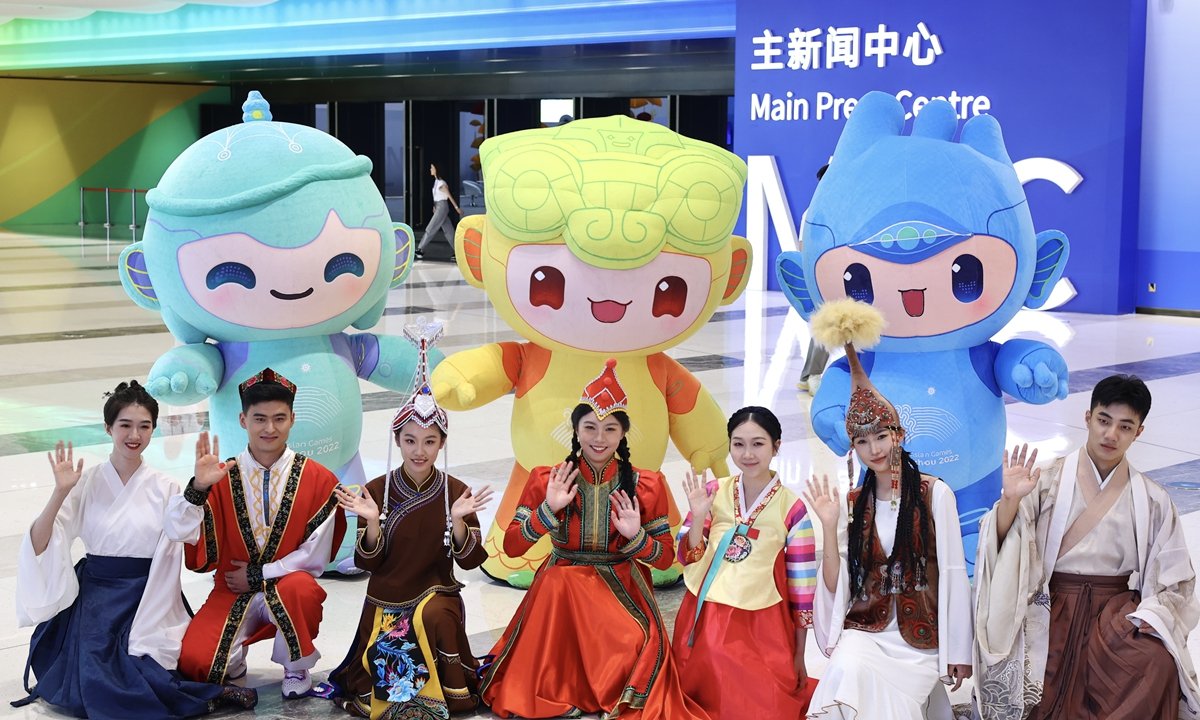The excitement is palpable as the Hangzhou Asian Games Village, a testament to modern innovation, design, and sustainability, officially welcomes athletes from across Asia. With the 19th Asian Games just a week away, anticipation is at its peak.
During a recent visit, Global Times reporters explored several Asian Games venues, experiencing first-hand the buzz in the air as the city gears up for the main event. More than just a place for athletes to rest, the village is a hub of cultural exhibitions, state-of-the-art technology displays, medical facilities, and commercial offerings.
Vinod Kumar Tiwari, the acting director general of the Olympic Council of Asia (OCA), lauded the village’s “innovative” approach during its grand opening ceremony. The Asian Games Village symbolizes the unity and solidarity of the Olympic movement in Asia. Remarkably, according to OCA’s website, this village is a pioneering concept, a first in both Asian and Olympic Games’ storied histories.
Tiwari is optimistic, stating, “We believe the quality of life at the Asian Games Village will pave the way for a seamless and triumphant Hangzhou Asian Games.”
Sprawling across 1.13 million square meters, this expansive village features areas designated for athletes, technicians, and the media. Given its size and offerings, it’s anticipated to be a central hub of activity throughout the Games.
China’s sports delegation had the honor of being the inaugural guests at the Hangzhou’s Asian Games Village. For many athletes, the village has surpassed their expectations. Zhu Yaming, a Tokyo Olympic triple jump silver medalist, shared his enthusiasm with Xinhua News Agency, noting the outstanding architecture, accommodation, dining, and overall ambiance.
A highlight of this year’s athletes’ village is its dedication to sustainability and its promotion of traditional Chinese culture. Echoing Hangzhou’s commitment to a “zero-waste” ethos, the village features a sustainable living center, employing eco-friendly materials, energy-conserving lighting, and recycling facilities.
Moreover, athletes have the opportunity to immerse themselves in traditional Chinese culture. Workshops on button knotting, bamboo weaving, and other age-old Chinese crafts are available.
The Global Times team also toured competition venues in Shaoxing, Hangzhou’s neighboring city. The Shaoxing Baseball & Softball Sports Centre is a nod to the region’s rich textile history, with designs inspired by weaving and the famous silk ribbons of Shaoxing.
Tong, a volunteer supervisor, mentioned that the center is being managed with the help of 863 volunteers, all born post-2000. These multilingual young minds are capable of assisting in 16 different languages, such as English, Japanese, Korean, Russian, and Persian.
One such volunteer, Wang Rong, is thrilled about her role. She aims to make every volunteer and athlete feel welcomed, hoping they achieve exemplary performances during the Games.
Plans for the venue’s post-Games use are already in motion. The facility is set to host national-level events, ensuring its utility long after the Games conclude.
Another notable venue in Shaoxing is the Shaoxing Keqiao Yangshan Sport Climbing Center. With its unique semi-open design covering 9,000 square meters, the center, once an abandoned mine, has transformed into an international competition site. From an aerial view, the venue’s design is reminiscent of a “silkworm cocoon,” a tribute to Keqiao district’s textile factories.
Huang Huiming, the venue’s chief designer and a torchbearer for the Games, highlighted the eco-centric design. A significant portion, 55%, of the venue utilizes open spaces, enhancing energy efficiency.
He adds, “In the center’s design, Chinese landscapes gracefully meld with international competitions, blending traditional culture with modern elements, exemplifying the evolution of Chinese architectural culture.”
The climbing center will not only serve as the venue for various climbing events during the Games but will also host international competitions in the future, emerging as a popular spot for climbing enthusiasts and tourists.
Across Hangzhou, the spirit of the Asian Games is palpable. From the Hangzhou Xiaoshan International Airport’s newly-constructed T4 terminal, adorned with Asian Games themes, to streets vibrant with banners, mascots, and colorful floral installations, the city is alive with the Games’ spirit.
The Hangzhou Asian Games Organizing Committee has confirmed participation from all 45 Olympic committees across Asia. The Games, scheduled from September 23 to October 8, are expected to witness the most significant delegations in history, as reported by Xinhua. The world eagerly awaits the commencement of what promises to be an unforgettable event in sports history.
Read More:
